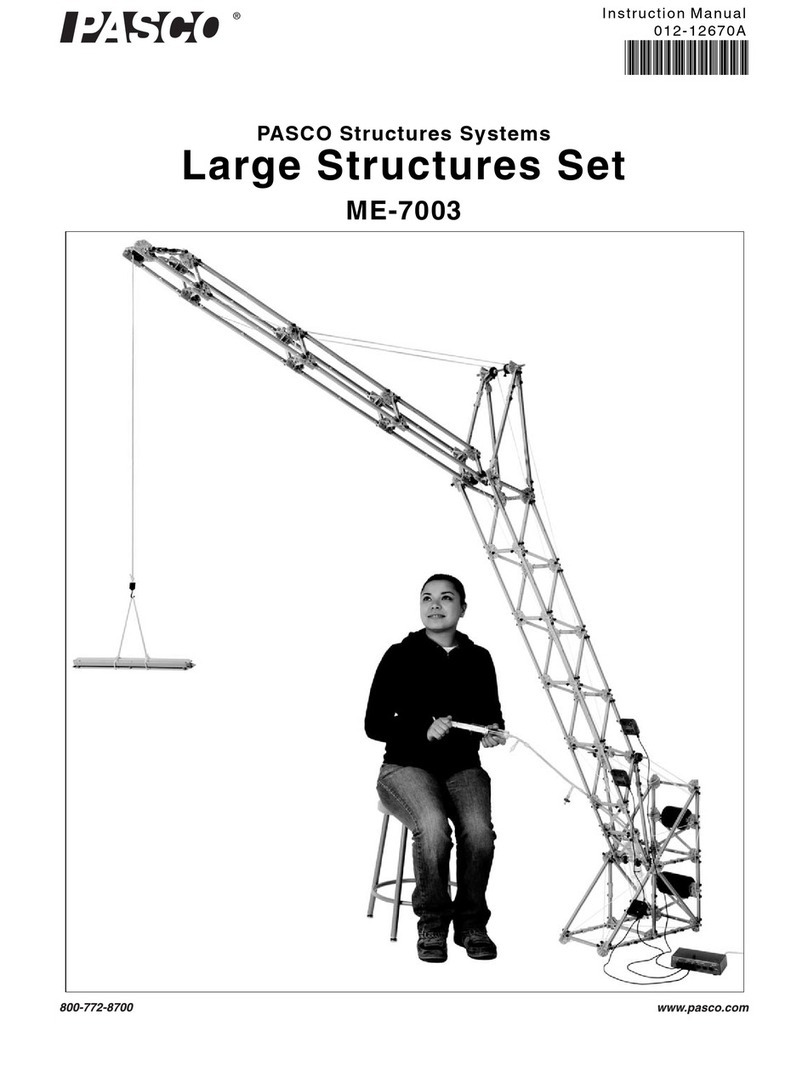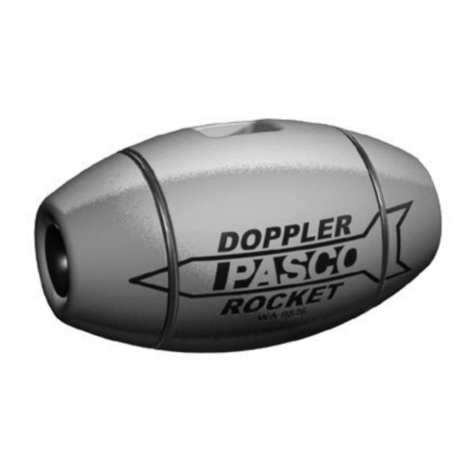
Bridge Set
4
Introduction
The Bridge Set is one part of the PASCO Structures System. Although the Bridge Set can be used as a
stand-alone set, it can also be combined with other parts of the PASCO Structures System. The Load Cell and
Amplifier Set (PS-2199) can be added to measure compression and tension forces in the structure members and
other sets of plastic parts are available.
The PASCO Structures System includes:
Truss Set (ME-6990) - A small set for building trusses
Bridge Set (ME-6991) - A larger set with road bed and cables for building bridges and rollercoasters
Advanced Set (ME-6992A) - The largest set with pulleys, axles, and additional connectors that make possible
bridges which have angles other than 45 and 90 degrees. This set can also be used to build suspension bridges,
cranes, cars and catapults.
Load Cell and Amplifier Set (PS-2199) - Load Cell Amplifier (PS-2198) with four 100 N Load Cells
(PS-2200)
Load Cell Amplifier (PS-2198) - Can plug in up to six Load Cells; requires a PASPORT interface to connect to
the USB port of a computer.
100 N Load Cell (PS-2200) - Strain gauges mounted on a beam; no electronics so a Load Cell requires the Load
Cell Amplifier (PS-2198).
The Bridge Set includes beams, brackets, screws, cord tensioning clamps, a Mini-car, and a flexible road bed for
building various trusses and bridges. Dynamics tracks can also be constructed to study motion. In addition, roll-
ercoaster design can be studied.
About the Components
Assembling Beams
Attach beams to connectors as illustrated.
Each half round connector has eight slots,
labeled A through H, for accepting beams.
There are five sizes of beams, labeled #1
through #5. Beam #1 is the shortest beam.
Related Equipment Related Equipment
Load Cell and Amplifier Set (PS-2199) Road Bed Spares (ME-6995)
Load Cell Amplifier (PS-2198) PASCO Interfaces
100 N Load Cell (PS-2200) PASCO Data Acquisition Software
Truss Set (ME-6990)
Thumbscrew
I-Beam
Half Round
Connector
Figure 1: Attaching a beam to a bracket
































